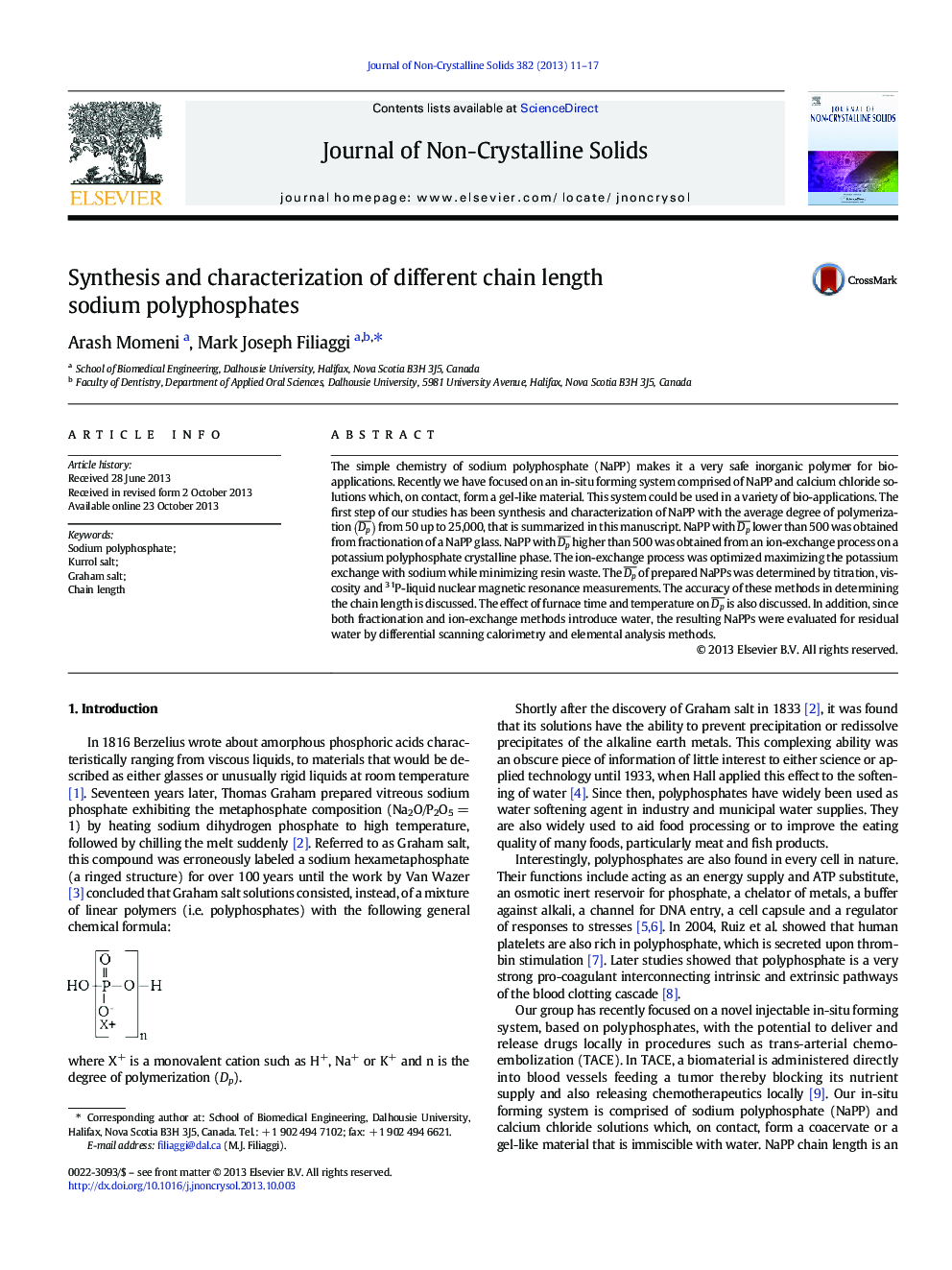| Article ID | Journal | Published Year | Pages | File Type |
|---|---|---|---|---|
| 1481095 | Journal of Non-Crystalline Solids | 2013 | 7 Pages |
•We describe synthesis of different chain length sodium polyphosphates.•Short chain polyphosphates were synthesized by fractionation.•Long chain polyphosphates were synthesized by an ion-exchange process.•Synthesized polyphosphates were characterized by a variety of methods.•The paper could be used as a comprehensive guide for synthesis of this polymer.
The simple chemistry of sodium polyphosphate (NaPP) makes it a very safe inorganic polymer for bio-applications. Recently we have focused on an in-situ forming system comprised of NaPP and calcium chloride solutions which, on contact, form a gel-like material. This system could be used in a variety of bio-applications. The first step of our studies has been synthesis and characterization of NaPP with the average degree of polymerization Dp¯ from 50 up to 25,000, that is summarized in this manuscript. NaPP with Dp¯ lower than 500 was obtained from fractionation of a NaPP glass. NaPP with Dp¯ higher than 500 was obtained from an ion-exchange process on a potassium polyphosphate crystalline phase. The ion-exchange process was optimized maximizing the potassium exchange with sodium while minimizing resin waste. The Dp¯ of prepared NaPPs was determined by titration, viscosity and 31P-liquid nuclear magnetic resonance measurements. The accuracy of these methods in determining the chain length is discussed. The effect of furnace time and temperature on Dp¯ is also discussed. In addition, since both fractionation and ion-exchange methods introduce water, the resulting NaPPs were evaluated for residual water by differential scanning calorimetry and elemental analysis methods.
